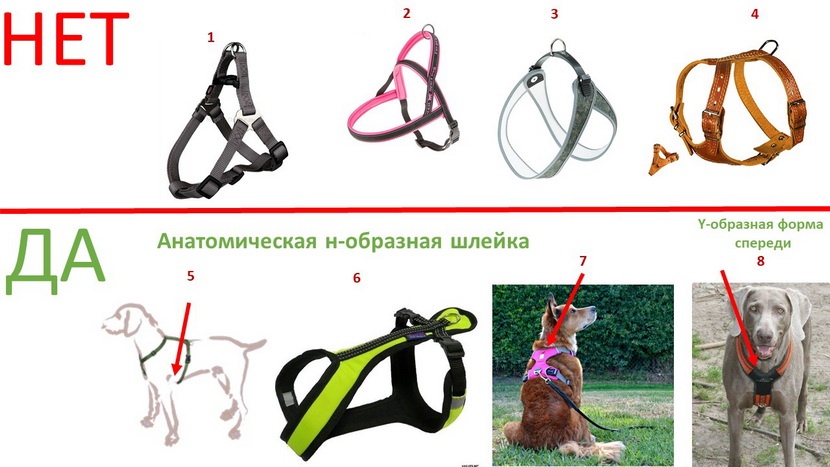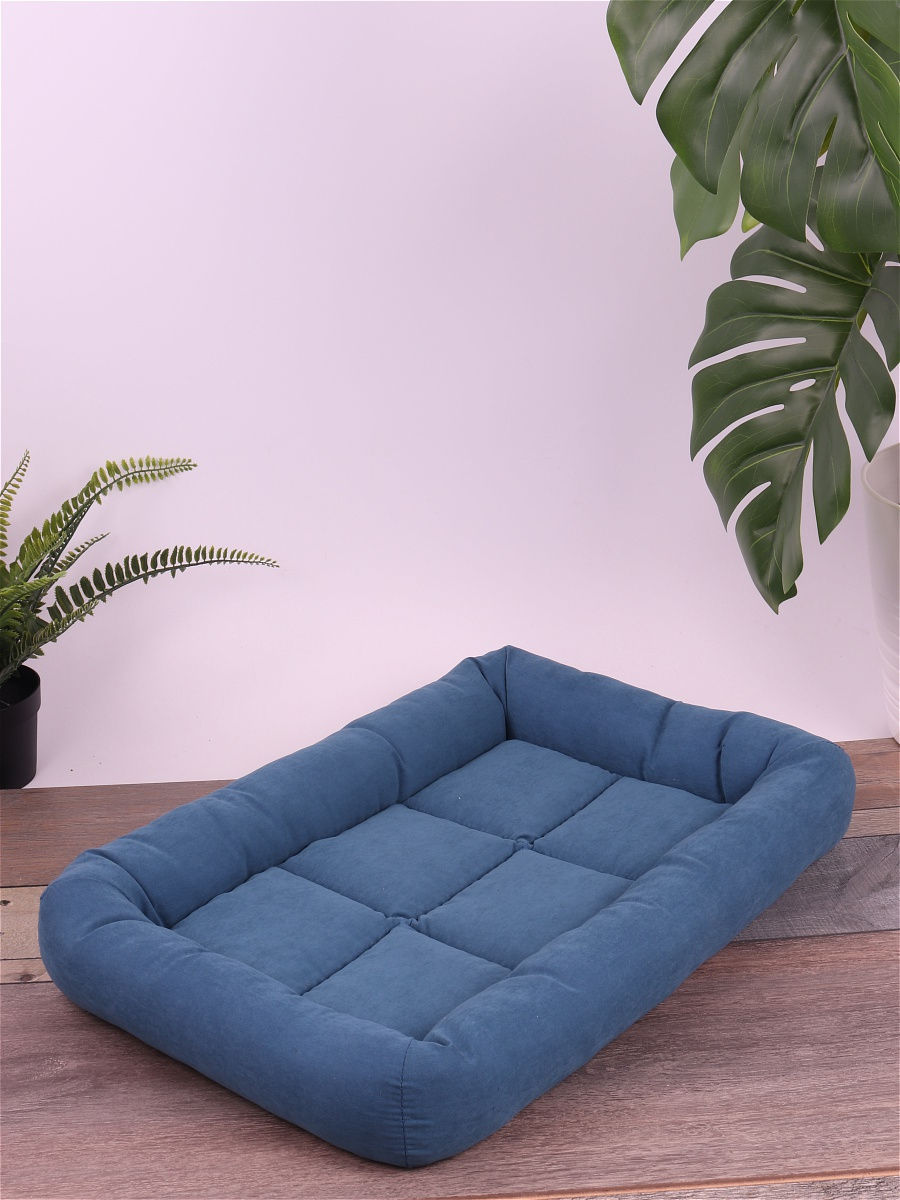
Harness or collar? What to choose for your dog?
Content
Walking together is an integral part of every pet caregiver's day. In addition to a variety of routes, games and training, you should take care of the right walking accessories. To the question “harness or collar?” many owners ask themselves, especially if they are caring for a dog for the first time. And since both harnesses and collars have different functions, let's look at them in more detail.
/
Collars for dogs - which one to choose?
Dog collars remain a very popular choice - they are usually lightweight and the animal is very easy to put on. There is a wide range of them on the market, not only in size and design, but also in the materials from which they are made, the type of clasp or the way they work. The simplest collars are leather collars with a buckle, fastened similarly to a trouser belt, and plastic (for example, polyester, nylon) fastened with a plastic buckle. Leather collars are durable and elegant, although they can be a little too coarse for small breed dogs and dogs with thin skin and short coats. In addition, if our dog likes to swim, a leather collar may not be suitable - this type of accessory dries for a long time, and with intensive use, it will probably lose its value over time. A plastic collar with a plastic buckle seems like a good choice for everyday frenzy - it doesn't absorb water and dries quickly. It is light and should not rub against the dog, the main thing is that high-quality material is used in the production and there are no protruding, sharp seams and ends.
When choosing such a collar, pay special attention to the clasp-clasp - it should be made of durable high-quality plastic that will not break with intensive use. The leash rings must also be well secured, preferably metal, such that they can withstand jerks during canine rabies. The safety of our dog depends on the quality of individual elements and their connections, so you should not save on it. Metal collars are not particularly recommended - they are susceptible to temperature changes, so in winter and summer they can cause discomfort or injury.
If our pet is learning to walk calmly on a leash or has a tendency to jerk, half-clamp or martingale collars will work well. They are equipped with a clamping mechanism on the dog's neck when stroking, which makes it difficult to release from the collar. They remain secure as the clamp only works up to a fixed torque. Thanks to this, the collar does not slip off the dog's head, and the handler has more control.
Be sure to choose the correct collar size and the width of the ribbon it is made from. The width of the collar varies from 1,5 cm to even 5 centimeters. For small and miniature dogs, a narrower collar is sufficient; for large dogs, wider collars are recommended - narrow collars can unpleasantly dig into the dog's neck. Collars are adjustable, which will help us to accurately fit the diameter to the dog's neck. Ordinary collars should fit the dog well, but not too tight so as not to cause discomfort and chafing - a well-fitting collar is one that allows you to slip two fingers under it; when more (or the entire arm) fits, the collar is too loose.
With semi-clamp models, the situation is different - thanks to the clamping mechanism, they can hang more freely around the dog's neck.
The collar as a choice for everyday walks is more suitable for calm dogs that do not have a tendency to run away or tug on the leash. In such cases, the collar can cause uncomfortable pressure or pain, and in some cases, damage to the larynx or injuries to the cervical vertebrae. Also, for puppies, collars of a fixed size, well fitting, are recommended, due to the fact that the anatomy of a puppy is different from an adult dog, and his bones continue to develop and are especially prone to injury. Accessories such as metal chain collars, earrings or chokers are accessories used in aversive dog training methods, they cause pain, damage the body and negatively affect the dog's psyche, and therefore are not recommended.
Collars for special tasks
Collars are not only a walking accessory. They can have special functions and be used not at all for attaching a lanyard, but as additional equipment.
- Luminous collar for dogs - a collar with a light (small bulbs, LEDs) allows us to locate the dog in the dark. Often has the form of a brightly luminous strip. This can come in handy if you're walking your dog after dark, in less frequented areas, without a leash. Also well suited for walking in poorly lit areas, even if the dog is on a leash - thanks to the luminous collar, another person, such as a cyclist or other tramp, can notice it.
- Flea/tick collar - this is a collar impregnated with a special flea and tick remedy (for example, the Foresto collar). It is used only to protect the animal from parasites and is worn as an additional collar, not tied to a leash.
- GPS dog collar - The GPS receiver on the collar allows you to determine the location of the dog over a large area. It usually connects to a smartphone app that shows the exact location of the dog. This can be a good choice for dogs that run away (although it's best not to let this happen, of course). They are also used by dogs working in the field. You can read more about dog locators here.
- Electric collar is a tool used for dog training, such as when a dog pulls on a leash, shows aggression towards other dogs while walking, or when it is too far away from the handler. The owner can then use a button that emits an electrical pulse on the pet's collar as punishment for the unwanted behavior. Depending on the model, you can adjust the strength of the impulse, there are also warning impulses, for example, in the form of vibration. However, it should be remembered that the use of such a collar is an aversive method based on corporal punishment, which can have very bad consequences. The use of electric collars is prohibited in some countries around the world, including Denmark, Germany and Sweden.
Dog harnesses - how to choose them?
Dog harnesses are a good alternative to a collar. Initially, they were actually used only by sled dogs, but these days they are often the choice of owners, including those who are homebodies. A harness, unlike a collar, evenly distributes pressure over the dog's body, and not just around the neck. They are recommended as being healthier for the dog's spine and joints, as well as providing greater security and control over the dog. However, before buying, you should familiarize yourself with the various models on the market and consciously choose the best solution for a particular dog. Remember that the harness makes it more difficult for the dog to move than a collar, so you should carefully select the size and adjust the straps.
Here are the most popular types of dog harnesses:
- norwegian harness - are popularly known as "Norwegians". It is relatively easy and quick to put on, which can be important for dogs who do not like the moment of dressing, because this model can be put on correctly without touching the animal. They consist of two belts - front and chest. The good thing is that the front of the dog is sewn at an angle, which allows better protection of the trachea from pressure. On the chest strap, on the back, there is a handle, which distinguishes the "Norwegians" and allows the guardian to comfortably hold the dog.
- Guard Harness – the most recommended harness in terms of ergonomics – for both puppies and adult dogs. They consist of a dorsal and pectoral belt connected by hoops in two places - in front and behind the shoulder blades. Their most important advantages are that the dog's shoulder blades have the greatest freedom of movement and that it is more difficult for dogs to untangle them. Therefore, they are also recommended for shy and insecure dogs, who can easily break out of another type of harness in a panic attack. Some models of the guard (for example, the Puppia harness) have a wider front strap, which additionally protects the throat from the pressure of a narrow strap. For this reason, they are often chosen by owners of brachycephalic breeds (Pugs, French Bulldogs) who have breathing problems.
- Harness for an easy walk - a model similar to the Norwegian harness, also has a front strap and chest-back straps, while the leash fastener is in front. The Easy Walk harness is recommended for teaching your dog to walk calmly on a leash and for unhooking the dog from the leash. Thanks to the fastening on the front strap, the forward jerk of the dog makes the animal turn towards us, that is, it redirects the force of the jerk and holds the dog. This pendant is not recommended as a casual or permanent accessory. The back strap restricts the movement of the shoulder blades, so this harness should only be used during training.
- Stepped suspension - a very popular and fairly cheap harness model. Their advantage is, of course, availability (we can find them in every pet store) and ease of putting on - just insert the dog's front paws into the holes and fasten at the top. They can work well with a dog that doesn't like "intrigues" in front of its head. However, they are not recommended for restless, shy or restless dogs, as they are quite easy to get out of.
Harness for special needs - what to choose for a gentle dog?
It is worth knowing that there are also special harnesses for dogs. If you want to travel with a dog in a car, it is worth taking care of its safety while driving. A dog transported in the back seat of a car must be safe and not pose a threat while driving (yes, there are fines for transporting a dog without a leash). It is worth considering buying a car harness or car seat belt. The harness can be attached to a regular harness our pet wears and the other end should be attached to the harness slot in the car. Thanks to this, the dog will not move around the car without control. On the other hand, special car harnesses, in addition to being able to be attached to seat belts, are also equipped with a layer of protective foam in the fairly folded front, which absorbs any jerks while driving.
If our dog is very scared, runaway or has recently been adopted and we need to give him and ourselves a greater sense of security, an anti-runaway harness will help. This is a variant of the guard harness - it has an additional third ring located at the height of the dog's belly, which additionally prevents it from slipping out of the harness.
If, on the other hand, we are looking after a dog with delicate skin and coat, it is worth considering a harness without pressure. They are sheathed with a delicate, soft material that should not cause abrasions.
Before choosing a harness, it is worth considering not only the size and physique of the dog, but also temperament and preferences. A harness should be comfortable and safe in the first place, but ease of donning/doffing, material strength and ease of cleaning are also important. It’s not worth saving on braces - high-quality braces can be used for many years, and the reason for buying new ones will be the desire to change the color or pattern, the choice of which is very wide on the modern market.
Want to know more about your pet? Look for inspiration in the section I have pets on AvtoTachki Passions.
.

